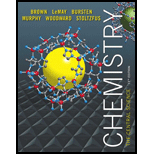
Chemistry: The Central Science (13th Edition)
13th Edition
ISBN: 9780321910417
Author: Theodore E. Brown, H. Eugene LeMay, Bruce E. Bursten, Catherine Murphy, Patrick Woodward, Matthew E. Stoltzfus
Publisher: PEARSON
expand_more
expand_more
format_list_bulleted
Concept explainers
Textbook Question
Chapter 5, Problem 103AE
Burning methane in oxygen can produce three different carbon-containing products: soot (very fine particles of graphite), CO(g), and CO2(g). (a) Write three balanced equations for the reaction of methane gas with oxygen to producethese three products. In each case assume that is the only other product. (b) Determine the standard enthalpies forthe reactions in part (a). (c) Why, when the oxygen supplyis adequate. is CO2(g) the predominant carbon—containing product of the combustion of methane?
Expert Solution & Answer
Want to see the full answer?
Check out a sample textbook solution
Chapter 5 Solutions
Chemistry: The Central Science (13th Edition)
Ch. 5.2 - Prob. 5.1.1PECh. 5.2 - Prob. 5.1.2PECh. 5.3 - Prob. 5.2.1PECh. 5.3 - Prob. 5.2.2PECh. 5.3 - Prob. 5.3.1PECh. 5.3 - Prob. 5.3.2PECh. 5.4 - Prob. 5.4.1PECh. 5.4 - Prob. 5.4.2PECh. 5.5 - Prob. 5.5.1PECh. 5.5 - Prob. 5.5.2PE
Ch. 5.5 - Practice Exercise 1 Suppose you have equal masses...Ch. 5.5 - Prob. 5.6.2PECh. 5.5 - Prob. 5.7.1PECh. 5.5 - Prob. 5.7.2PECh. 5.6 - Prob. 5.8.1PECh. 5.6 - Prob. 5.8.2PECh. 5.6 - Prob. 5.9.1PECh. 5.6 - Prob. 5.9.2PECh. 5.7 - Prob. 5.10.1PECh. 5.7 - Prob. 5.10.2PECh. 5.7 - Prob. 5.11.1PECh. 5.7 - Prob. 5.11.2PECh. 5.7 - Prob. 5.12.1PECh. 5.7 - Practice Exercise 2 Use Table 5.3 to calculate the...Ch. 5.8 - Prob. 5.13.1PECh. 5.8 - Practice Exercise 2 Given the following standard...Ch. 5.8 - Prob. 5.14.1PECh. 5.8 - Prob. 5.14.2PECh. 5 - Prob. 1DECh. 5 - Prob. 1ECh. 5 - Prob. 2ECh. 5 - Prob. 3ECh. 5 - Practice Exercise 2
Using Table 20.1, rank...Ch. 5 - Prob. 5ECh. 5 - Prob. 6ECh. 5 - Prob. 7ECh. 5 - Prob. 8ECh. 5 - Prob. 9ECh. 5 - Prob. 10ECh. 5 - Prob. 11ECh. 5 - Prob. 12ECh. 5 - Prob. 13ECh. 5 - Prob. 14ECh. 5 - Prob. 15ECh. 5 - Prob. 16ECh. 5 - Prob. 17ECh. 5 - Prob. 18ECh. 5 - Prob. 19ECh. 5 - Prob. 20ECh. 5 - Prob. 21ECh. 5 - Prob. 22ECh. 5 - Prob. 23ECh. 5 - Prob. 24ECh. 5 - Prob. 25ECh. 5 - Prob. 26ECh. 5 - Prob. 27ECh. 5 - In chemical kinetics, the entropy of activation is...Ch. 5 - Prob. 29ECh. 5 - Prob. 30ECh. 5 - Prob. 31ECh. 5 - The following data compare the standard enthalpies...Ch. 5 - Prob. 33ECh. 5 - Prob. 34ECh. 5 - Prob. 35ECh. 5 - What is the reducing agent in the following...Ch. 5 - Prob. 37ECh. 5 - Prob. 38ECh. 5 - Prob. 39ECh. 5 - Prob. 40ECh. 5 - Prob. 41ECh. 5 - Prob. 42ECh. 5 - Prob. 43ECh. 5 - The standard cell potential is 1.46 V for a...Ch. 5 - Prob. 45ECh. 5 - Prob. 46ECh. 5 - Prob. 47ECh. 5 - Prob. 48ECh. 5 - Prob. 49ECh. 5 - Practice Exercise 1
Which of the following...Ch. 5 - Prob. 51ECh. 5 - Prob. 52ECh. 5 - Prob. 53ECh. 5 - Prob. 54ECh. 5 - Prob. 55ECh. 5 - Prob. 56ECh. 5 - Prob. 57ECh. 5 - Prob. 58ECh. 5 - Prob. 59ECh. 5 - Prob. 60ECh. 5 - What is the connection between Hess’s law and the...Ch. 5 - Prob. 62ECh. 5 - 20.2 You may have heard that “antioxidants” are...Ch. 5 - Prob. 64ECh. 5 - Prob. 65ECh. 5 - Prob. 66ECh. 5 - Prob. 67ECh. 5 - Prob. 68ECh. 5 - Prob. 69ECh. 5 - Prob. 70ECh. 5 - Prob. 71ECh. 5 - Prob. 72ECh. 5 - 20.13
What is meant by the term oxidation?
On...Ch. 5 - Prob. 74ECh. 5 - Prob. 75ECh. 5 - Prob. 76ECh. 5 - Prob. 77ECh. 5 - Prob. 78ECh. 5 - Prob. 79ECh. 5 - Prob. 80ECh. 5 - Prob. 81ECh. 5 - Prob. 82ECh. 5 - Prob. 83ECh. 5 - Prob. 84ECh. 5 - Prob. 85ECh. 5 - The heat of combustion of ethanol, C2H5OH(l) is...Ch. 5 - Prob. 87ECh. 5 - Prob. 88ECh. 5 - Prob. 89ECh. 5 - The automobile fuel called E85 consists of 85%...Ch. 5 - Prob. 91AECh. 5 - Prob. 92AECh. 5 - Prob. 93AECh. 5 - Prob. 94AECh. 5 - 5.95 Consider a system consisting of the following...Ch. 5 - A sample of gas is contained in a...Ch. 5 - Prob. 97AECh. 5 - Prob. 98AECh. 5 - A house is designed to have passive solar energy...Ch. 5 - Prob. 100AECh. 5 - Prob. 101AECh. 5 - Prob. 102AECh. 5 - Burning methane in oxygen can produce three...Ch. 5 - Prob. 104AECh. 5 - Prob. 105AECh. 5 - The hydrocarbons acetylene (C2H2) and benzene...Ch. 5 - Prob. 107AECh. 5 - Three common hydrocarbons that contain four...Ch. 5 - Prob. 109AECh. 5 - The Sun supplies about 1.0 kilowatt of energy for...Ch. 5 - It is estimated that the net amount of carbon...Ch. 5 - Prob. 112IECh. 5 - Prob. 113IECh. 5 - Prob. 114IECh. 5 - Prob. 115IECh. 5 - Prob. 116IECh. 5 - Prob. 117IECh. 5 - The methane molecule, CH4, has the geometry shown...Ch. 5 - Prob. 119IE
Knowledge Booster
Learn more about
Need a deep-dive on the concept behind this application? Look no further. Learn more about this topic, chemistry and related others by exploring similar questions and additional content below.Similar questions
- Does the standard enthalpy of formation of H2O(g) differ from H for the reaction 2H2(g)+O2(g)2H2O(g)?arrow_forwardThe enthalpy of combustion of diamond is -395.4 kJ/mol. C s, dia O2 g CO2 g Determine the fH of C s, dia.arrow_forwardWould the amount of heat absorbed by the dissolution in Example 5.6 appear greater, lesser, or remain the same if the heat capacity of the calorimeter were taken into account? Explain your answer.arrow_forward
- Nitromethane, CH3NO2, is a good fuel. It is a liquid at ordinary temperatures. When the liquid is burned, the reaction involved is chiefly 2CH3NO2(l)+32O2(g)2CO2(g)+N2(g)+3H2O(g) The standard enthalpy of formation of liquid nitromethaneat 25°C is 112kJmol1; other relevant values can be found in Appendix D. Calculate the enthalpy change in the burning of 1 molliquid nitromethane to form gaseous products at25°C. State explicitly whether the reaction is endothermicor exothermic. Would more or less heat be evolved if gaseous nitromethanewere burned under the same conditions?Indicate what additional information (if any) you would need to calculate the exact amount of heat, and show just how you would use this information.arrow_forwardHow many moles of isooctane must be burned to produce loo U of heat under standard state conditions?arrow_forward9.102 A runner generates 418 kJ of energy per kilometer from the cellular oxidation of food. The runner's body must dissipate this heat or the body will overheat. Suppose that sweat evaporation is the only important cooling mechanism. If you estimate the enthalpy of evaporation of water as 44 kJ/mol and assume that sweat can he treated as water, describe how you would estimate the volume of sweat that would have to be evaporated if the runner runs a 10-km race.arrow_forward
- Starting with equation 2.27 andthe original definitionof enthalpy, derive the fact that Cp-=Cv-+Rarrow_forwardThe reaction SO3(g)+H2O(l)H2SO4(aq) is the last step in the commercial production of sulfuric acid. The enthalpy change for this reaction is 227 kJ. In designing a sulfuric acid plant, is it necessary to provide for heating or cooling of the reaction mixture? Explain.arrow_forwardExplain why absolute enthalpies and energies cannot be measured, and only changes can be determined.arrow_forward
- A 1.00 mol sample of H2 is carefully warmed from 22 K to 40 K at constant volume. a What is the expected heat capacity of the hydrogen? b What is q for the process?arrow_forwardCombustion reactions involve reacting a substance with oxygen. When compounds containing carbon and hydrogen are combusted, carbon dioxide and water are the products. Using the enthalpies of combustion for C4H4 ( 2341 kJ/mol), C4H8 (2755 kJ/mol), and H2 (286 kJ/mol), calculate H for the reaction C4H4(g)+2H2(g)C4H8(g)arrow_forward9.63 Reactions of hydrocarhons are often studied in the petroleum industry. One example is 2C3H8(g)C6H6(l)+5H2(g) , with H = 698 kJ. If 35 L of propane at 25C and 0.97 atm is to be reacted, how much heat must he supplied?arrow_forward
arrow_back_ios
SEE MORE QUESTIONS
arrow_forward_ios
Recommended textbooks for you
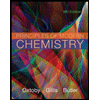 Principles of Modern ChemistryChemistryISBN:9781305079113Author:David W. Oxtoby, H. Pat Gillis, Laurie J. ButlerPublisher:Cengage Learning
Principles of Modern ChemistryChemistryISBN:9781305079113Author:David W. Oxtoby, H. Pat Gillis, Laurie J. ButlerPublisher:Cengage Learning ChemistryChemistryISBN:9781305957404Author:Steven S. Zumdahl, Susan A. Zumdahl, Donald J. DeCostePublisher:Cengage Learning
ChemistryChemistryISBN:9781305957404Author:Steven S. Zumdahl, Susan A. Zumdahl, Donald J. DeCostePublisher:Cengage Learning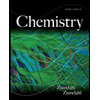
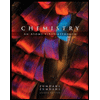 Chemistry: An Atoms First ApproachChemistryISBN:9781305079243Author:Steven S. Zumdahl, Susan A. ZumdahlPublisher:Cengage Learning
Chemistry: An Atoms First ApproachChemistryISBN:9781305079243Author:Steven S. Zumdahl, Susan A. ZumdahlPublisher:Cengage Learning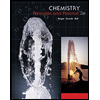 Chemistry: Principles and PracticeChemistryISBN:9780534420123Author:Daniel L. Reger, Scott R. Goode, David W. Ball, Edward MercerPublisher:Cengage Learning
Chemistry: Principles and PracticeChemistryISBN:9780534420123Author:Daniel L. Reger, Scott R. Goode, David W. Ball, Edward MercerPublisher:Cengage Learning Chemistry: Principles and ReactionsChemistryISBN:9781305079373Author:William L. Masterton, Cecile N. HurleyPublisher:Cengage Learning
Chemistry: Principles and ReactionsChemistryISBN:9781305079373Author:William L. Masterton, Cecile N. HurleyPublisher:Cengage Learning

Principles of Modern Chemistry
Chemistry
ISBN:9781305079113
Author:David W. Oxtoby, H. Pat Gillis, Laurie J. Butler
Publisher:Cengage Learning

Chemistry
Chemistry
ISBN:9781305957404
Author:Steven S. Zumdahl, Susan A. Zumdahl, Donald J. DeCoste
Publisher:Cengage Learning


Chemistry: An Atoms First Approach
Chemistry
ISBN:9781305079243
Author:Steven S. Zumdahl, Susan A. Zumdahl
Publisher:Cengage Learning

Chemistry: Principles and Practice
Chemistry
ISBN:9780534420123
Author:Daniel L. Reger, Scott R. Goode, David W. Ball, Edward Mercer
Publisher:Cengage Learning

Chemistry: Principles and Reactions
Chemistry
ISBN:9781305079373
Author:William L. Masterton, Cecile N. Hurley
Publisher:Cengage Learning
Calorimetry Concept, Examples and Thermochemistry | How to Pass Chemistry; Author: Melissa Maribel;https://www.youtube.com/watch?v=nSh29lUGj00;License: Standard YouTube License, CC-BY